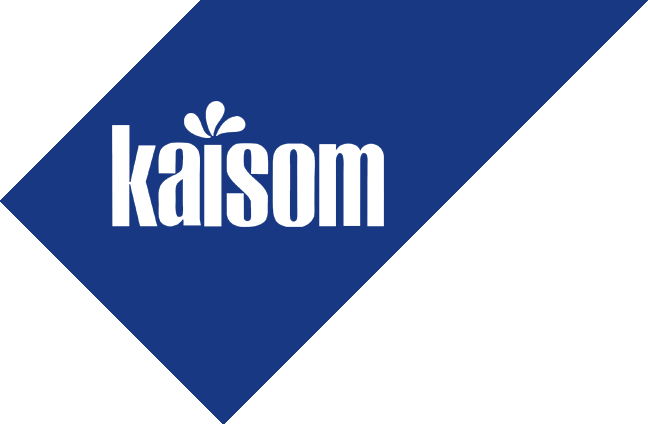The Power of Mythical Creatures in Modern Visuals 09-2025
Mythical creatures have fascinated humanity for millennia, serving as symbols of power, virtue, and fear. These legendary beings, from dragons to mermaids, have transcended their ancient origins to become integral parts of contemporary visual culture. Their enduring appeal is evident across movies, video games, fashion, and digital media, where they continue to inspire and provoke emotional responses. Exploring how mythological symbolism shapes modern visuals reveals not only cultural continuity but also the creative ways artists and designers reinterpret timeless stories for today’s audiences.
- Historical Foundations of Mythical Creatures in Art and Warfare
- The Educational Power of Myth in Modern Visuals
- Mythical Creatures as Symbols in Modern Design and Media
- Case Study: The Legend of Medusa™ as a Modern Visual Representation
- Mythical Creatures in Contemporary Art and Fashion
- Mythical Creatures and Cultural Identity
- Psychological and Emotional Impact of Mythical Creatures in Visuals
- Non-Obvious Depth: Mythical Creatures in Digital and Virtual Realities
- Conclusion: The Continuing Evolution and Significance of Mythical Creatures in Visual Culture
Historical Foundations of Mythical Creatures in Art and Warfare
Ancient civilizations incorporated mythical creatures into their art, architecture, and military symbolism to convey divine authority, protection, and societal values. For example, Egyptian sphinxes and Greek griffins appeared in sculptures and murals, embodying guardianship and power. Such figures often decorated temples, armor, and banners, serving as visual assertions of divine favor or martial strength. These representations were not merely decorative; they functioned as symbols that reinforced cultural identity and social hierarchy.
Over time, these mythological symbols transitioned from religious and ceremonial contexts to more secular interpretations. In medieval Europe, dragons and unicorns appeared in heraldry, representing strength and purity. Today, modern reinterpretations maintain these symbolic roots but adapt them for new contexts, such as branding or entertainment. The evolution underscores how mythic imagery continues to resonate, providing universal themes that bridge ancient and contemporary visual storytelling.
The Educational Power of Myth in Modern Visuals
Myths serve as powerful storytelling tools that communicate complex human virtues, fears, and societal norms. In contemporary media, mythological creatures are often allegories for virtues like courage (e.g., dragons representing bravery) or fears such as chaos and destruction (e.g., monstrous beasts). Films like Clash of the Titans or video games like Dark Souls utilize mythic symbolism to deepen narrative engagement, providing audiences with layers of meaning rooted in ancient stories.
“Mythology acts as a universal language, connecting modern audiences with timeless themes through visual storytelling.”
This bridging of history and modern storytelling enriches our understanding of human nature and cultural evolution. Modern visuals often draw on mythological motifs to evoke emotional responses, fostering empathy, reflection, or even warning—making myths a vital educational resource that transcends time.
Mythical Creatures as Symbols in Modern Design and Media
In branding, mythical imagery enhances brand identity by evoking qualities like strength, mystery, and protection. For instance, companies incorporate phoenixes to symbolize rebirth or dragons to signify power in logos and merchandise. Popular culture further amplifies this trend:
- The dragon in Game of Thrones as a symbol of chaos and power
- Mermaid motifs in fashion and cosmetics, representing allure and mystery
- Superhero icons like Marvel’s Black Panther drawing inspiration from mythic feline symbolism
Ancient symbols influence these modern aesthetics, creating a visual language that is both familiar and compelling. As seen in the use of mythic motifs, designers harness the deep-seated human connection to legendary creatures to craft memorable and meaningful visuals.
Case Study: The Legend of Medusa™ as a Modern Visual Representation
Medusa, originating from Greek mythology, symbolizes transformation, warning, and the duality of beauty and danger. Her myth involves a cursed beauty whose gaze turns onlookers to stone, embodying themes of power, fear, and change. Modern reinterpretations often depict Medusa with a focus on empowerment, highlighting her as a symbol of resilience and transformation rather than solely as a monster.
In contemporary visuals, Medusa appears in fashion, art, and digital media, emphasizing her symbolic versatility. For example, the Legend of Medusa™ showcases her as a modern myth, illustrating how her head—once a symbol of warning—has evolved into a symbol of power and transformation. This modern depiction aligns with the broader trend of reclaiming mythic figures to serve as icons of empowerment in today’s culture.
“Medusa’s head, now a badge of resilience, exemplifies how myth can be reshaped to inspire and empower.”
Mythical Creatures in Contemporary Art and Fashion
Artists reinterpret mythological beings through various media, blending traditional motifs with modern aesthetics. Contemporary art often portrays Medusa with a focus on themes of empowerment, trauma, or transformation, challenging classical representations. Similarly, fashion designers incorporate mythical motifs—such as serpents, wings, or horns—into accessories, clothing, and jewelry, creating an aesthetic that resonates with deeper mythic symbolism.
This blending fosters a cultural dialogue where myth becomes a living part of modern identity. For instance, jewelry collections featuring serpent motifs draw inspiration from Medusa’s myth, symbolizing protection and rebirth, while also appealing to contemporary themes of self-empowerment.
Mythical Creatures and Cultural Identity
Different cultures adapt and reinterpret mythic figures to reflect their unique values and narratives. For example, Chinese dragons symbolize auspicious power and wisdom, whereas Scandinavian trolls embody protection and folklore. Cross-cultural influences foster hybrid mythologies, enriching the global visual lexicon. The Legend of Medusa™ exemplifies how Greek mythology continues to inspire modern narratives worldwide, emphasizing universal themes of transformation and power.
Such adaptations reinforce cultural identity while fostering cross-cultural understanding through shared mythic symbolism.
Psychological and Emotional Impact of Mythical Creatures in Visuals
Mythic figures act as archetypes—universal symbols that evoke deep-seated emotional responses. Carl Jung identified archetypes like the Hero, the Shadow, and the Anima, which often feature mythological creatures. These symbols inspire feelings of awe, fear, or empowerment, depending on context. For example, depictions of Medusa can terrify or empower viewers, depending on how her story is told. This emotional engagement is crucial for storytelling and branding, creating memorable impressions that resonate on a subconscious level.
The power of myth in visuals lies in their ability to inspire, terrify, or embolden audiences by tapping into collective human experiences—making mythic imagery an essential component of effective visual communication.
Non-Obvious Depth: Mythical Creatures in Digital and Virtual Realities
In the realm of video games and virtual worlds, mythical creatures serve as key characters and symbols. Games like God of War or Skyrim utilize dragons, giants, and other legendary beings to create immersive experiences rooted in mythic storytelling. Augmented reality (AR) applications further incorporate mythological themes, allowing users to interact with legendary creatures in real-world settings, blending myth with modern technology.
The future of digital narratives holds immense potential for myth-inspired stories, where mythic creatures become integral to interactive experiences that educate, entertain, and inspire. For example, AR apps that project Medusa’s image in real space can transform myth into an educational or entertainment tool, engaging audiences in new, immersive ways.
Conclusion: The Continuing Evolution and Significance of Mythical Creatures in Visual Culture
Mythical creatures continue to be vital elements of visual storytelling, serving educational, symbolic, and emotional functions. Their timeless themes adapt seamlessly into modern contexts—from branding and fashion to digital media—demonstrating their enduring relevance. As myths evolve, so do their representations, with figures like Medusa exemplifying how ancient symbols can be reimagined as sources of empowerment and resilience.
The ongoing integration of mythic imagery into modern culture underscores humanity’s persistent need for stories that inspire, warn, and unite us. For an illustrative example of this ongoing evolution, explore how Legend of Medusa™ embodies the modern myth, blending ancient symbolism with contemporary empowerment.
“Mythology is the mirror of our collective soul, reflecting timeless truths through modern visuals.”





